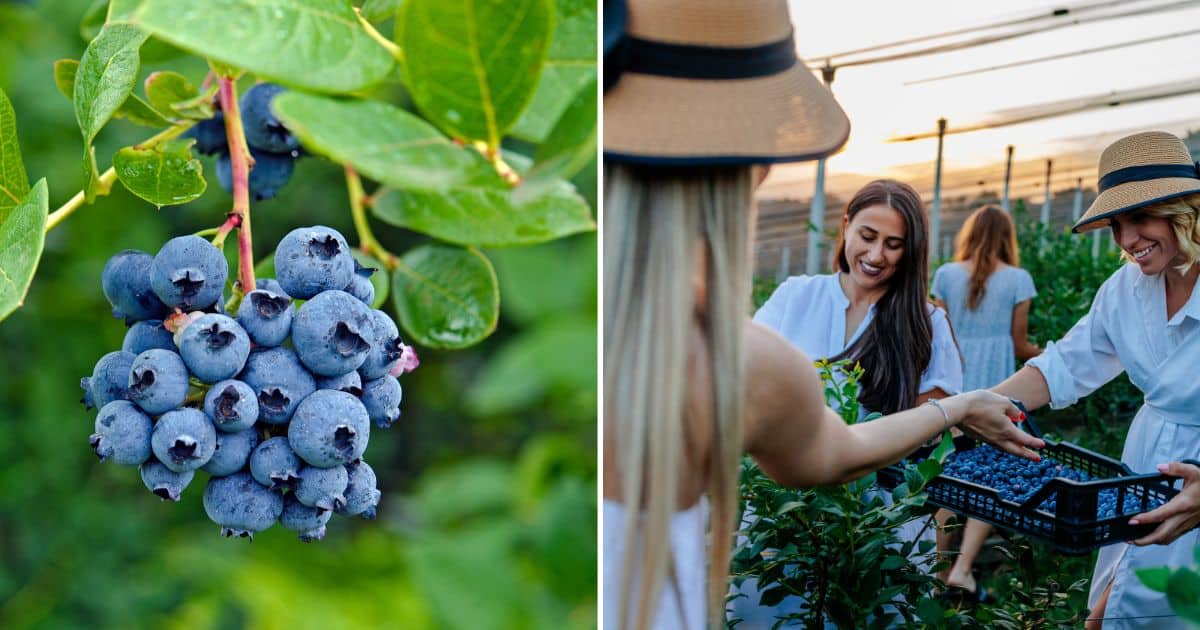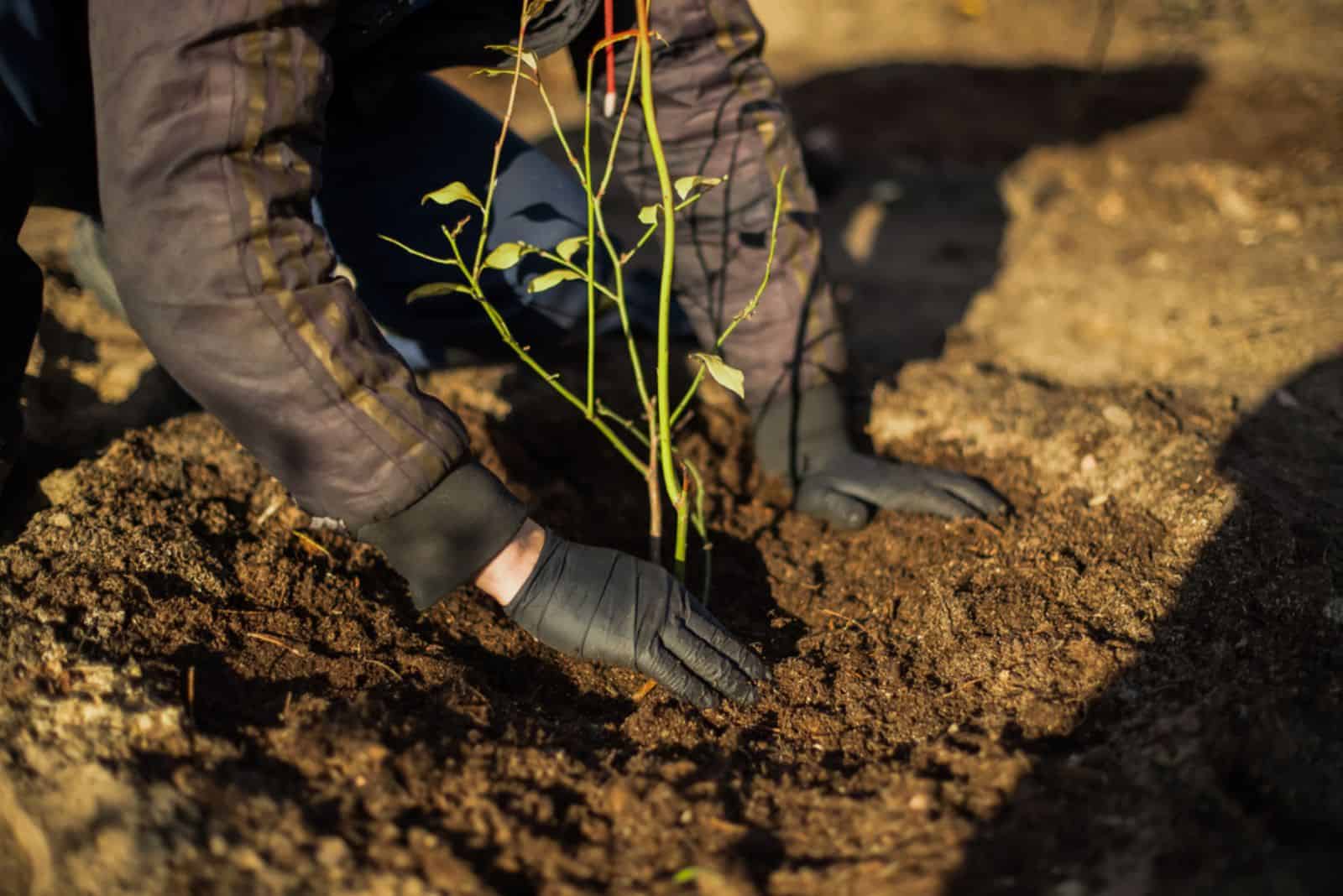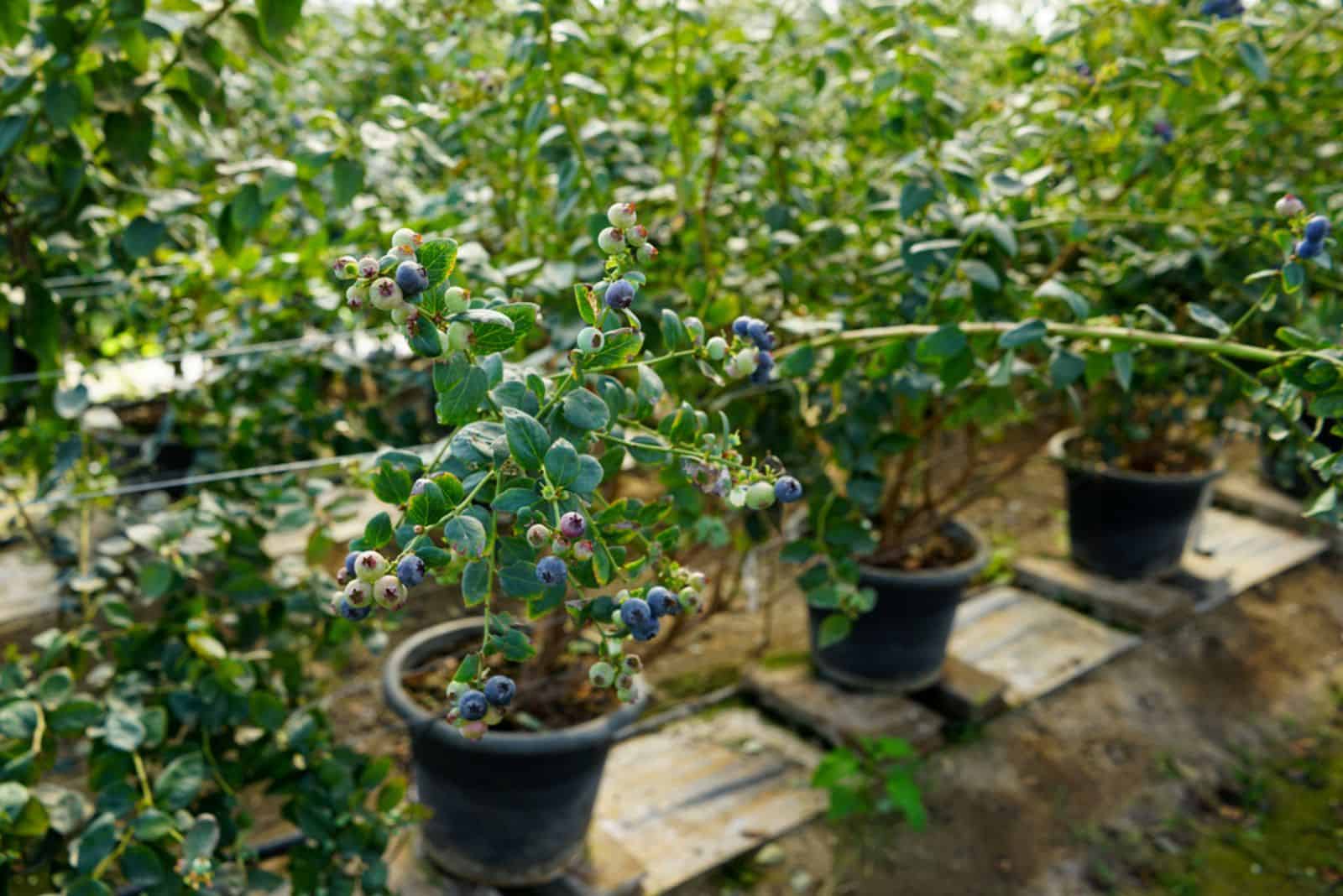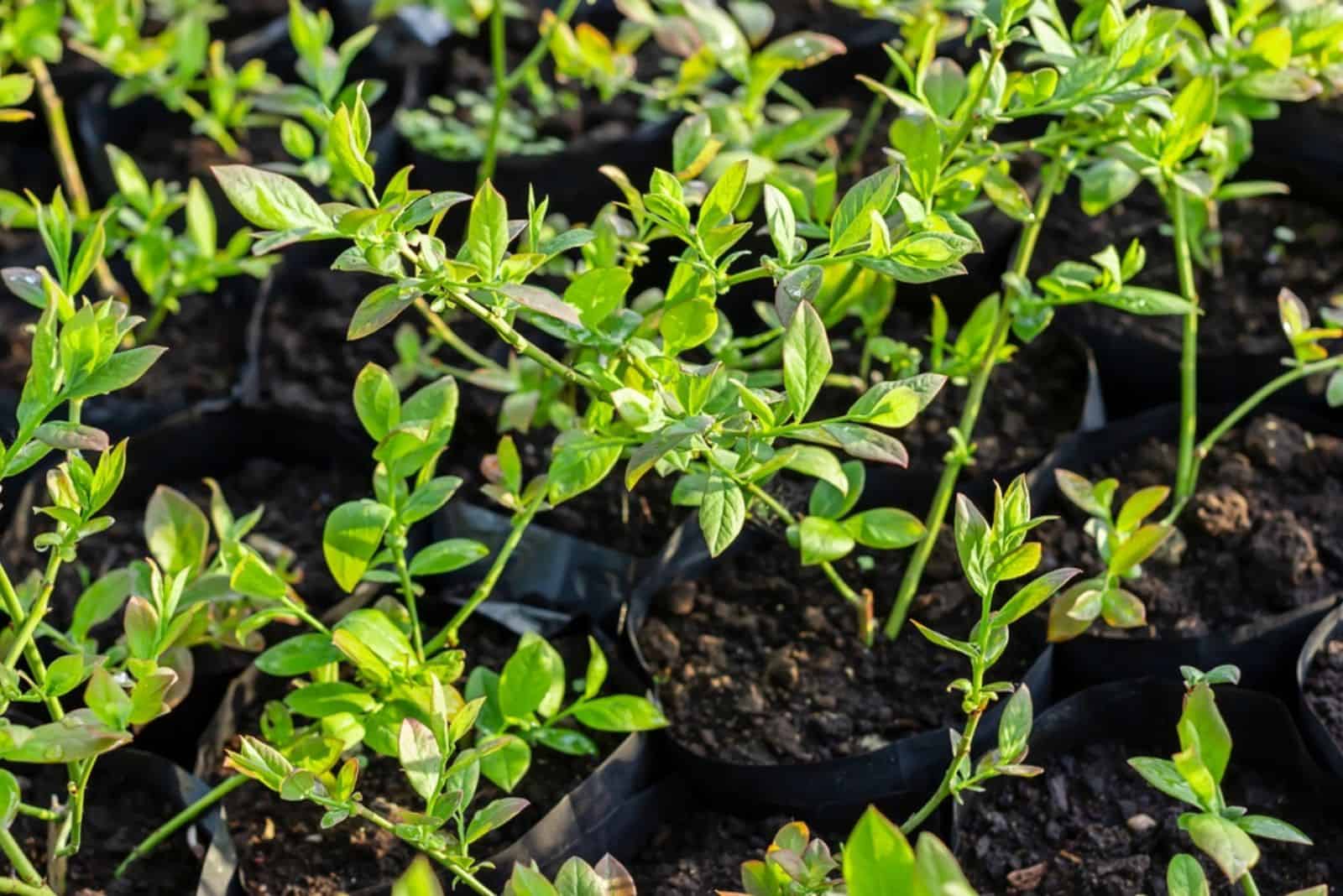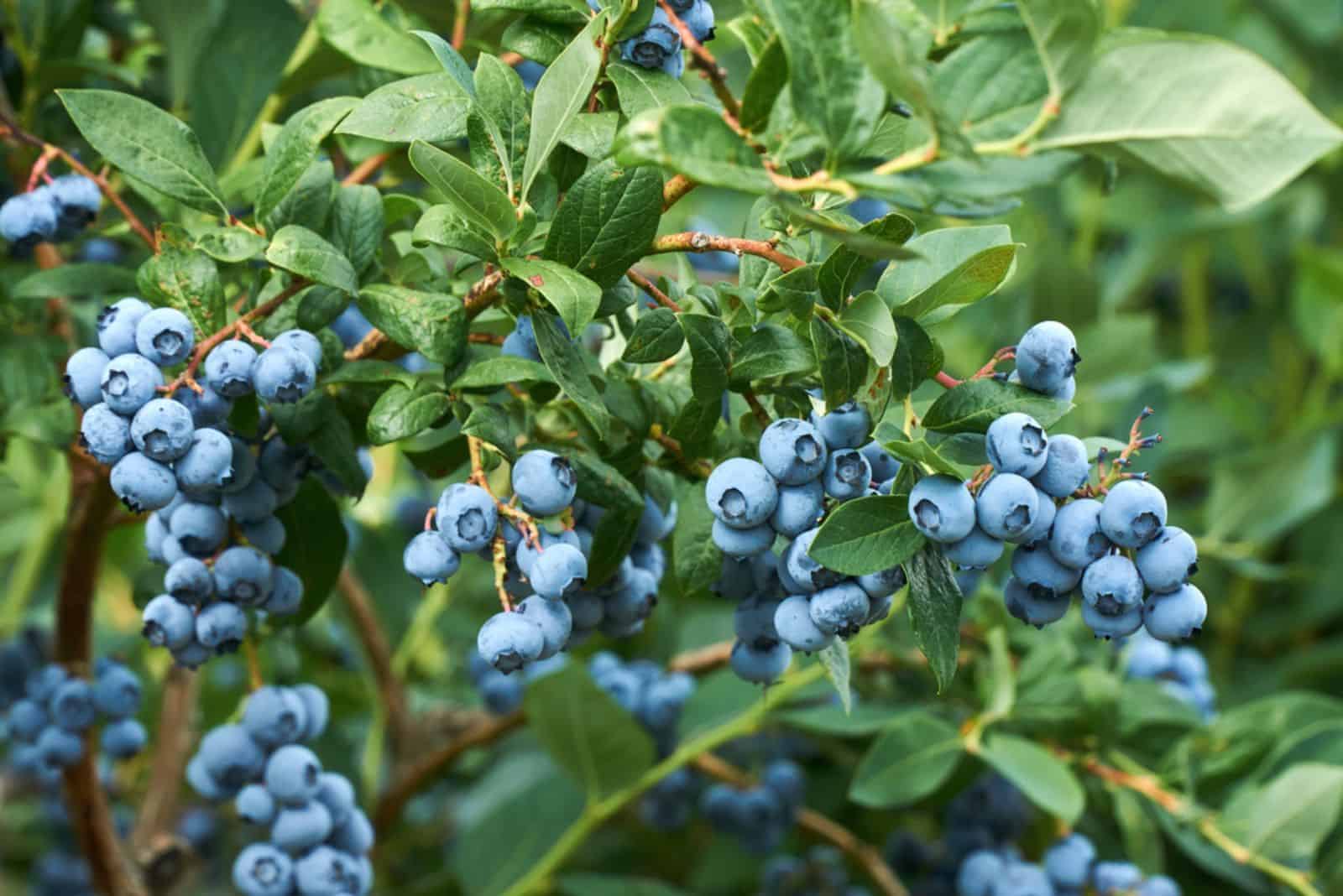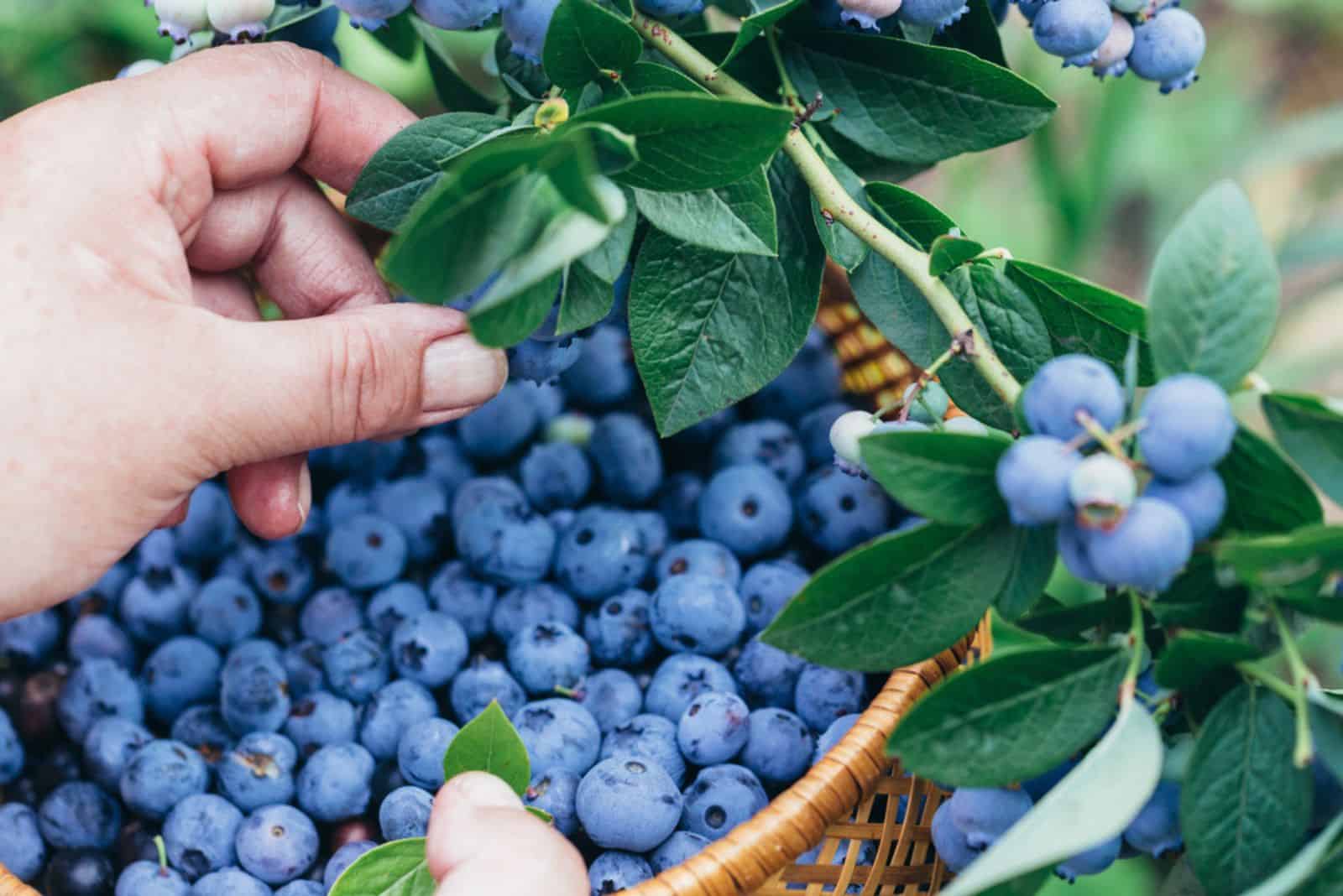Blueberries have it all! They’re bursting with flavor and are packed with nutrients, making them one of the best summer fruits out there.
If you were struggling with growing these tasty treats, or would like to increase your yield, look no further than these 10 blueberry growing tips for the tastiest berries you’ve ever tried!
Let’s explore the world of blueberries, from planting to harvest.
1. Patience Is Key
I’m sure you didn’t expect to see this kind of tip in this article, but without patience the chances of a bountiful harvest drastically decrease.
There are many factors that affect blueberry production. Not every variety will grow well in your garden, so finding the suitable one is the first step.
You also need to plan where you’ll plant your blueberries, test the soil, and ensure the best growing conditions throughout the entire life cycle.
Nothing will happen overnight, and you must be patient and follow each step carefully to get buckets of blueberries.
This is a pretty long ride, and blueberry plants typically take 5 years to fully establish and produce an abundance of delicious fruit.
2. Choose A Suitable Variety
If you are a beginner grower, it’s best to start your blueberries from transplants. However, if you like a challenge or have many years of experience, you can grow these berries from seeds.
When purchasing either transplants or seeds, you must read the label. There are 4 types of blueberries you can choose from, and the best one depends on your climate.
Let’s take a closer look.
1. Highbush blueberries. They’re very popular here in America, and you can grow them if you live in a region with naturally high acidity levels in the soil. Some of the best varieties include Bluecrop, Patriot, and Blueray.
2. Lowbush blueberries: These varieties produce smaller and sweeter fruit. For me, they are the best types for jellies and jams. Growers in the Northeastern United States seem to love them. Some of the varieties include Rubycarpet and Polaris.
3. Rabbiteye blueberries: These varieties thrive in hot and humid climates. Consider growing cultivars such as Titan, Climax, or Montgomery.
4. Southern highbush blueberries: These are actually hybrids that can tolerate humidity and heat better than traditional highbush cultivars. Some of the best varieties include the Top Hat, Misty, and Emerald.
Check when each variety starts producing fruit and consider growing different varieties to extend the season.
3. Test The Soil
The best way to get sweet blueberries is to test the soil pH. This is the first and most essential step to get healthy berries ready for harvest.
This fruit needs a pH between 4 and 5, which is pretty high, so you’ll most likely need to amend the soil to increase it.
Luckily, there are many high-quality and affordable pH soil test kits on the market. The essential thing is to know how to use them.
Here are a couple of tips.
1. Take a few samples of soil from different parts of your garden. The roots of these plant species won’t penetrate deeply into the ground, so you can take the samples from the top 5 inches of the soil.
2. Mix all the samples and follow the instructions from the manufacturer; add the soil to a tube, add the indicator solution, and shake it well.
3. Leave it for a few minutes and read the results based on the color you get.
4. Fixing pH Levels
If acidity levels in the soil aren’t high enough, there are a few materials you can use to increase them.
One of the most commonly used materials for this purpose is elemental sulfur. You can purchase it from plant stores or order it online. I recommend purchasing ones labeled as organic.
You can also use other organic materials that increase acidity, such as peat moss or pine needles.
5. More Sun = More Berries
When it comes to light for this fruit, the more, the better! Blueberries enjoy full sun and will burst with flavor if you let them soak up those rays.
Avoid planting your blueberries near trees because they’ll filter the light and inhibit growth. Warm temperatures and direct light will enhance water evaporation from blueberry soil, so you’ll need to water them regularly.
One of the best ways to keep your blueberries hydrated is by adding a layer of mulch to the soil to trap moisture.
6. Make Enough Room
Space matters. You need to leave enough room between each blueberry plant to allow good air circulation and provide enough space for further development.
The suitable spacing for most cultivars is approximately 4-6 feet between each plant and 8 feet between each row. Bear in mind that some tall varieties may need even more space.
If you decide on a compact variety, you can plant them closer to each other.
The best thing you can do is check the expected mature size of the variety you intend to grow.
7. Ensure Structural Support
I’m sure you’ve heard that blueberries don’t require staking. Well, that’s not completely true, especially if you live in a windy area.
Another situation where your blueberries will benefit from staking is when you have varieties that produce larger fruit.
Therefore, climate and variety determine the need for staking. Luckily, staking blueberries isn’t a hard task; you simply insert a wooden stake near the plant and attach it to the main stem using some twine.
Voila! Your blueberries are protected from damage and won’t tip over.
8. Keep The Birds Away
It’s not just people that find blueberries delicious! Birds are one of the most common invaders in blueberry gardens.
The simplest and most effective way to deter magpies and all other birds is with netting.
You need to be careful if you decide on this method, and only install it after the blueberry flowering season ends and the first fruit appears. Nets can damage the flowers and consequently decrease the yield.
Don’t leave it to chance, and consider using some other methods for repelling birds. Here are a few that work:
1. Reflective objects and decoys: Newer generations may not know much about CDs, but you can use them to repel birds. They’ll spin on windy days, and the reflection will scare off our feathered friends.
2. Scarecrow: Yes, this method really works! You can purchase one, but I’m sure you have some old clothes to fill with straw and hang in your garden.
3. Birds care tape: The methods above may look unattractive in your garden, so you can choose bird scare tape instead. They’re specifically designed for this purpose. Some growers claim that aluminum foil has the same effect, but from my experience, it tears up and looks ugly.
9. In-Ground vs Container Growing
Even though these berries can be successfully grown in containers, there are a few things you should consider if you decide on that method.
Blueberries are way harder to maintain when grown in containers because they can’t use the nutrients directly from the garden soil. Additionally, there’s not that much moisture, so watering requirements are way higher.
You’ll need to feed and water them regularly, especially during hot summer days. Sometimes, you will need to water your container berries a few times a week.
If you don’t have any space in your garden, container growing is still a good option. It does require a lot of time, patience, and effort, but if you are a true blueberry lover, it’s worth it!
Another option is to grow blueberries hydroponically, so if you are into that type of gardening and have a lot of experience, it’s a great idea.
10. Know When And How To Harvest
I’m sure you know how to do this part but I would like to share a few tips with you. We all know that fully ripe blueberries taste best, and fruit is ripe when it’s deep blue all over and there’s no green or pink.
Always pick your berries in the mornings after the dew evaporates. Don’t wait until the heat of the day because they will dry out and be less flavorful.
When picking your blueberries, be gentle and tug them off the bush instead of pulling them hard. This way, you’ll get ripe blueberries without damaging the plant.
With a little effort and knowledge, growing blueberries can be fun and highly rewarding. Just follow our tips and you’ll enjoy buckets of tasty and nutritious blueberries.
Give it a try and thank me later!

